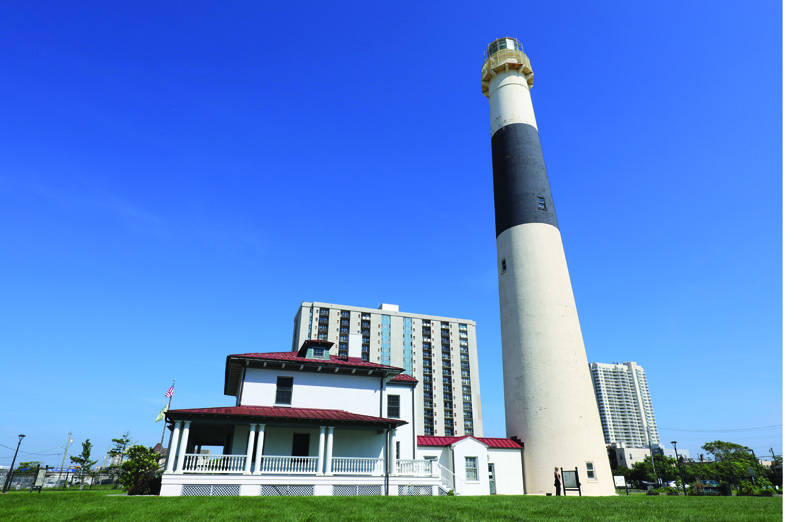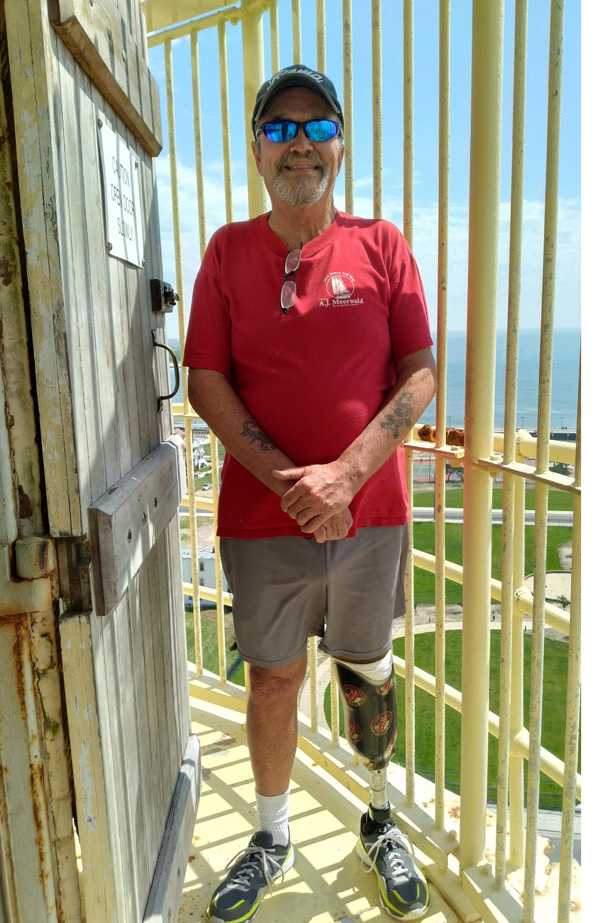
It’s 228 steps to the top of Absecon Lighthouse, the third-highest seaside beacon in the United States. Brian Bishop starts climbing the stairs every Thursday at about 10 a.m. and reaches the top in however long it takes. “It’s seven minutes if I go straight up,” he says. “If I stop to think about things, it takes longer.”
He frequently does pause to ponder, because he almost always has a load on his mind. “I basically have my whole week in tow,” says Bishop, who works as a mental health counselor. “Sometimes it’s my whole life.” He hauls the baggage up to the lantern room, then sets it aside while he gazes over the silent ocean and the Atlantic City Boardwalk. When he heads back down, the baggage stays behind.
“Every time I leave that lighthouse,” Bishop says, “I can feel the relief in my head, my shoulders, my whole body.”
He’s been climbing lighthouses since he was eight years old, ascending towers along the Caribbean, the Mediterranean, and both sides of the Atlantic. During Bishop’s childhood, the lighthouse next to his dad’s restaurant on the pier at St. Simon’s Island, Georgia, was his personal playground. As an adult, he gravitated toward the structures as calming refuges from the chaos that engulfed his life. Throughout some turbulent years of addiction, recovery, depression, anxiety, and renewal, Bishop never stopped finding lighthouses to ascend.

“It became a spiritual outlet as much as a physical exercise,” he says. “A lighthouse was always a signal of strength and stability—of hope.”
All of that was thrown into doubt when Bishop started having problems with his left leg in 2012. It began with a small but persistent infection; as the condition worsened, he endured multiple debridements and surgeries over a period of years. When Bishop finally opted to have his leg amputated below the knee in 2017, his doctors couldn’t assure him he’d be able to get back to climbing lighthouses. But he knew. “Twenty minutes before they wheeled me into surgery,” he says, “I told Bonnie, my partner, ‘I’m going to be climbing again soon.’ Eight months later I was in Key West, climbing.”
Limb loss only deepened Bishop’s attachment to his passion. “We all go through losses,” says Bishop. “All my life, I’ve had lighthouses to deal with those things. Amputation not only put that at risk, it opened a new window of understanding. It made me face up to myself. It made me realize everything I’m carrying up there.”
Clean and sober for nearly a decade, Bishop now helps other people shoulder their loads. He became a peer mental health counselor about a year after his amputation, advising people who are wrestling with many of the same challenges he’s confronted in his life. As he climbs to the top of the Absecon Lighthouse each Thursday, Bishop carries some of their burdens along with his own.
“These things don’t go away just because I leave them up in the seagull sky,” he says. “But it helps. Some days I come down in freaking tears. It’s not about the climb. It’s about finding a release for all the people I deal with, including me.”



